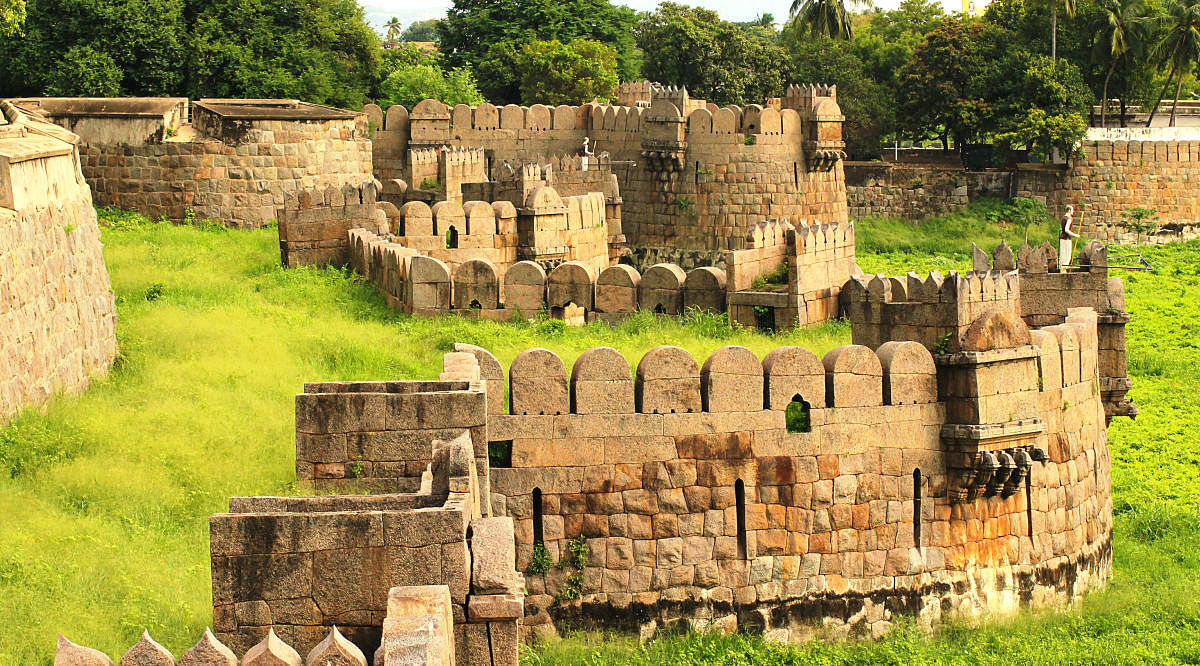

Having been confined to our homes for nearly two years due to the pandemic, we felt the urge to travel. The timing looked safe and encouraging with the Covid situation largely under control and all of us being fully vaccinated. We felt we could drive down to any nearby place and started looking at a list of places to visit. We realised that we had never been to Vellore though we have passed by that city many times on our trips to Chennai from Bengaluru. On a quick reading, Vellore offered us the famous Vellore Fort to visit leave alone several other famous pilgrimage centres around Vellore, if one was interested.
Vellore is 210 km from Bengaluru on the national highway to Chennai, easily reachable by road in 3.5 hours. One could make a one day trip to Vellore or stay overnight to visit more places. The tour around the Vellore Fort alone would take about three hours. We decided to go to Vellore a day earlier and stay overnight. The drive from Bengaluru to Vellore was smooth and pleasurable with many scenic spots on the way.
The fort is located in the heart of Vellore city and our hotel was just a couple of kilometres away. As we drove, the magnificent fort, with a wide moat all around it, emerged and the sight was nothing but awesome. One can drive into the fort with parking arrangements available there. The fort houses the famous Jalaganteshwar temple dedicated to Lord Shiva, the St John’s Church, a mosque and a couple of archaeological museums. The temple closes at 11.30 am and reopens at 4 pm, hence you need to make the visit in the morning if you are returning to Bengaluru the same day. The temple has a huge gopuram studded with exquisite sculptures. We had a wonderful darshan of lord Shiva. As history goes, the temple was originally built by the Vijayanagara kings in the middle of a water tank.
The temple was mutilated due to subsequent invasions and hence out of fear of damage the shiv lingam was removed from the temple and safeguarded in another place called Sathuvacheri. The temple was vacant for the next nearly 400 years. In 1981, in a daring move, some of the devotees brought the deity and reinstalled it.
Testimony to a chequered history
The worship continues from then onwards. The mandapam which is located just adjacent to the main temple is full of awesome sculptures, the style typically depictive of the Vijayanagara era. One can spend a considerable amount of time watching the magnificent carvings. Over the last 500 years, the fort changed many hands of successive rulers of Bijapur, the Marathas, the Mughals, Carnatic Nawabs and eventually came under the control of the British. The fort also witnessed the first Sepoy mutiny in 1806 when hundreds of soldiers were killed. It also housed some of the famous prisoners like the family of Tipu Sultan and the last king of Sri Lanka, Vikrama Rajasinha, whose burial site still lies there. Thus the magnificent fort still stands as mute testimony to the chequered history of south India. Our next destination was the St Johns Church, which was built in 1846 by the then Government of Madras for the officers and men of the East India Company military station. The church is named after St John, the evangelist. However, the church was never officially consecrated. St John’s Church is the oldest standing church in the Vellore area. The church displays many memorial tablets of the British era.
A visit to the museums was worthwhile as there are many awe-inspiring ancient sculptures and statues of the bygone era, excavated in and around Vellore. Many of them are more than 1,000 years old depicting our rich heritage. After spending a couple of hours, we noticed a few tea shops near the car park at the entrance of the fort. We had refreshing tea and proceeded to a ramp by the fort entrance, leading to the top of the walls of the fort where the public is allowed.
Magnificent ramparts
The climb was very easy and from the top of the ramparts, one could see all around the fort and the beautiful moat with a lot of water. The massiveness of the fort walls and the moat was just breathtaking.
You can walk around a lot as the ramparts are very long considering the fort occupies a huge area. We wound up our visit with the walk on the walls and headed back to our hotel in time for our lunch. Overall, the trip to Vellore Fort made us wonder about the sheer resolve, toil and ingenuity of the Vijayanagara kings more than 450 years ago, to have created such a great structure that still stands magnificent.
The fort is considered to be amongst the best examples of military architecture in Southern India and is known for its grand ramparts, wide moat and robust masonry. Vellore Fort is one of the most popular tourist destinations for both domestic and international visitors to Tamil Nadu.
A little distance away from the fort lie the tombs of the family of Tipu Sultan.